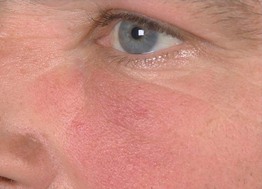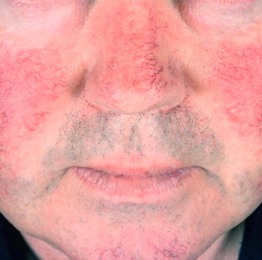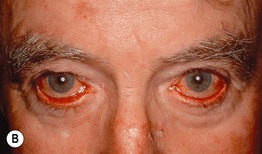30
Rosacea and Periorificial Dermatitis
Clinical Features
• Highly variable degree of severity, from a few papulopustules to extreme distortion of the nose.
• Table 30.1 lists the four major types of rosacea (Figs. 30.1–30.5) and their characteristics.
Table 30.1
Four major types of rosacea.
An individual patient may have more than one form. Some patients also have seborrheic dermatitis and/or actinic damage.
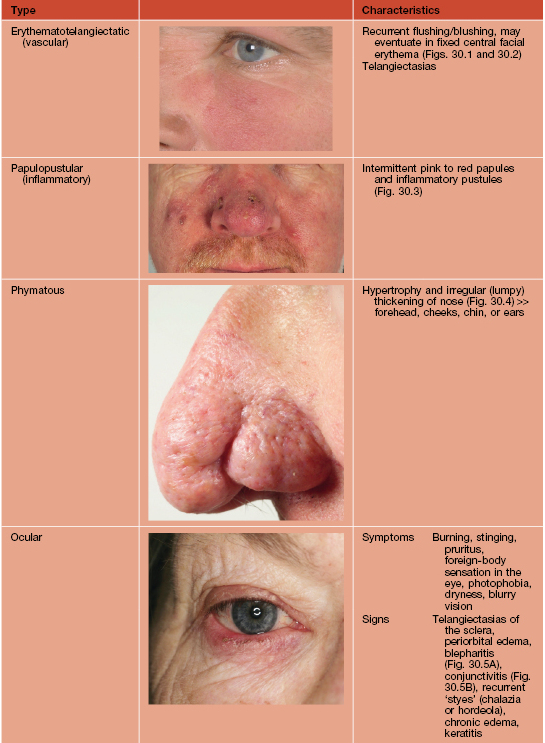

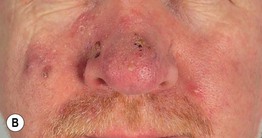
Fig. 30.3 Rosacea. A Moderate papulopustular rosacea of the forehead. Note the superficial nature of the inflammatory lesions. B Moderate to severe papulopustular rosacea. There is a typical centrofacial distribution of erythema, telangiectasias, papules, and pustules. In addition, the skin has a scaly, crusty surface, and this is often a sign of more severe disease. Courtesy, Frank C. Powell, MD.
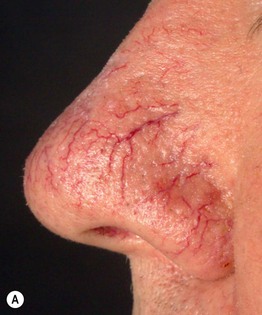
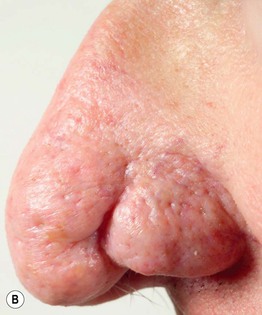
Fig. 30.4 Rhinophyma – early versus advanced disease. A Tortuous, telangiectatic vessels on the distal aspect of the nose contribute to its hyperemic appearance; this hyperemia may predispose to the subsequent hypertrophic changes of rhinophyma. Note the early sign of dilated follicles. B Distortion of nasal tissue due to tissue hypertrophy. Electrosurgery or laser therapy can be used to debulk and resculpt this nose. Courtesy, Frank C. Powell, MD.

